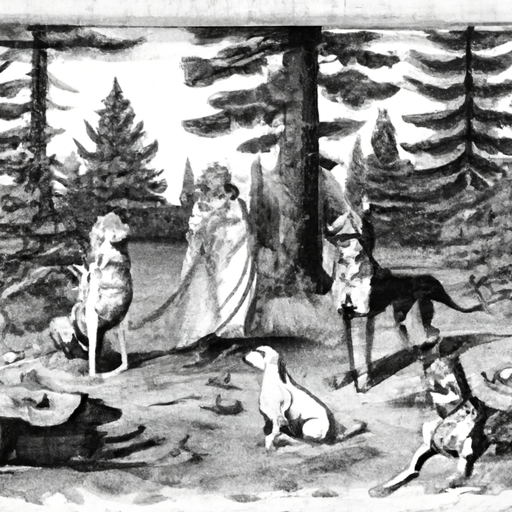When we think of dogs, most of us envision the myriad of breeds recognized by the American Kennel Club. However, before the arrival of Europeans, the indigenous peoples of North America had their own canine companions. These dogs were not just pets, but integral parts of their societies. Let’s explore the fascinating history of these native dogs, their characteristics, roles, and their legacy in today’s breeds.
Table of Contents
- Early Canine Companions
- Breeds and Characteristics
- Roles in Native American Society
- Legacy and Impact
- Frequently Asked Questions
Early Canine Companions
The first dogs in North America arrived with the indigenous peoples from Asia over 15,000 years ago. These dogs were likely small, spitz-like animals, similar to today’s Siberian Huskies or Alaskan Malamutes. Over time, these dogs adapted to their new environments, evolving into distinct breeds that were unique to North America.
Breeds and Characteristics
There were several types of dogs that were common among Native American tribes. One of the most well-known is the Carolina Dog or “American Dingo.” These medium-sized dogs have a distinctive fish-hook tail and a coat that ranges from yellow to red. They are known for their intelligence and adaptability.
The Alaskan Malamute and the Siberian Husky, both descendants of the original dogs that crossed the Bering Strait, were also important breeds. They were used for pulling sleds and carrying heavy loads in the harsh northern climates.
The Mexican Hairless Dog, or Xoloitzcuintli, was revered in Aztec culture and is one of the world’s oldest and rarest breeds. Its lack of hair is a result of a genetic mutation, but in the hot Mexican climate, this was an advantage.
| Breed | Characteristics |
|---|---|
| Carolina Dog | Medium size, fish-hook tail, yellow to red coat |
| Alaskan Malamute | Large, strong, bred for pulling heavy loads |
| Siberian Husky | Medium size, thick coat, blue or multi-colored eyes |
| Mexican Hairless Dog | Hairless, medium to large size, calm and alert demeanor |
Roles in Native American Society
Dogs held a variety of roles in Native American societies. They were used for transportation, pulling sleds or travois (a type of sled used by the Plains Indians). They were also used for hunting, herding, and protection.
In some tribes, dogs were considered spiritual beings and were involved in religious ceremonies. For instance, the Xoloitzcuintli was believed to guide the souls of the dead to the underworld.
These dogs were not just working animals, but were also part of the family. They were cared for, played with, and mourned when they passed away. Some tribes even believed that dogs had souls and would accompany their owners in the afterlife.
Legacy and Impact
Today, these native breeds are rare, but their legacy lives on. Some modern breeds, like the Australian Shepherd and the Labrador Retriever, have lineage that can be traced back to these early American dogs.
Research is ongoing, and more information about these amazing animals is discovered every day. If you are interested in learning more about the history of dogs in America, check out this article from National Geographic.
For dog lovers looking for a unique pet, consider adopting a Carolina Dog or a Mexican Hairless. Remember, these breeds have specific needs and may not be suitable for everyone. Before adopting, make sure to do your research and consider your lifestyle. Onetopdog has some great resources on choosing the right dog for you, like their articles on dog breeds, dog care and dog training.
Frequently Asked Questions
-
What kind of dogs did Native Americans have?
Native Americans had several types of dogs, including the Carolina Dog, Alaskan Malamute, Siberian Husky, and the Mexican Hairless Dog. -
What roles did dogs play in Native American societies?
Dogs were used for transportation, hunting, herding, and protection. They were also involved in religious ceremonies and were considered part of the family. -
Are there any modern breeds that descended from these native dogs?
Yes, some modern breeds, like the Australian Shepherd and the Labrador Retriever, have lineage that can be traced back to these early American dogs.
From their arrival with the first humans to cross the Bering Strait, to their roles in pre-colonial societies, dogs have been an integral part of the history of North America. Their story is a testament to the enduring bond between humans and their canine companions, a bond that continues to this day.



